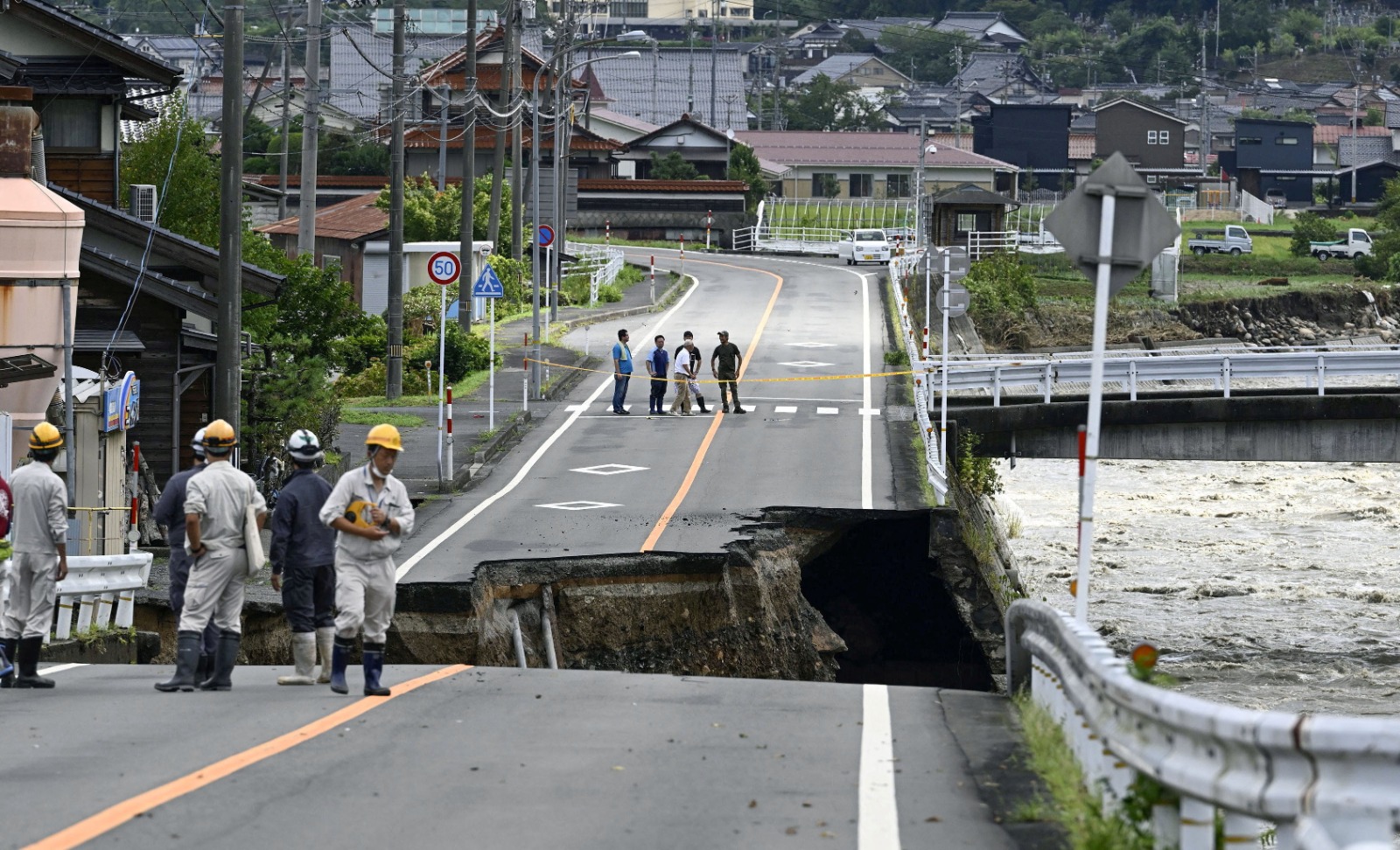As Typhoon Lan swept across Japan’s mainland, a slow-moving tempest unleashed chaos, leaving behind a trail of disrupted lives and altered plans. With its powerful winds and relentless rains, the typhoon prompted the evacuation of 240,000 residents, the cancellation of hundreds of flights, and the closure of iconic landmarks. As the storm’s eye approached the Sea of Japan, authorities remained vigilant, warning of concentrated rainfall that could trigger further flooding. Amid the storm’s fury, Japan navigates a tumultuous day of weather-related challenges.
Disruption in the Skies and Stranded Travelers
Typhoon Lan’s ferocity was swiftly felt in the aviation sector, with over 560 flights grounded by Japan Airlines and All Nippon Airways, causing frustration for more than 50,000 passengers. Major airports in western Japan stood eerily quiet as travelers faced the storm’s wrath. Among the stranded, 650 individuals were compelled to spend a night at Kansai airport, an island facility in Osaka Bay, where resourceful operators provided them with essential supplies and a semblance of comfort.
Nature’s Fury Unleashed: Floods, Landslides, and Canceled Events
Rivers, swollen beyond their banks, inundated adjacent areas, dislodging fragments of bridges and prompting authorities to issue flood and landslide warnings. While tornadoes swirled ominously in the skies, their impact remained minimal. However, the powerful weather system cast a wide net, leading to the cancellation of major events. Universal Studios Japan’s bustling theme park shut its doors, and high school baseball championship games at Koshien Stadium in Hyogo Prefecture faced postponement. The usually bustling centers of leisure and recreation became empty and deserted.
Communities Mobilize: Evacuations and Preparedness
Amid the storm’s chaos, authorities displayed determination and resilience, moving swiftly to protect their citizens. Evacuation centers, strategically located in secure structures and elevated terrain, provided refuge for residents across 11 prefectures. The Fire and Disaster Management Agency led the charge, ensuring that safety remained a top priority. As the typhoon’s core weakened while drifting towards the Sea of Japan, concerns lingered about prolonged heavy rainfall. Central Japan and the Sea of Japan regions remained on high alert as the potential for flooding remained a looming threat.
Typhoon Lan’s unrelenting assault on Japan brought with it a barrage of challenges. From disrupted air travel to stranded residents and shuttered attractions, the tempest showcased the nation’s resilience in the face of nature’s fury. As communities rallied to ensure the safety of their citizens, the storm’s gradual weakening provided a glimmer of relief. However, the threat of continued heavy rain underscored the need for vigilance and preparedness. In the aftermath of Typhoon Lan, Japan stands united, rebuilding and recovering from the tempest’s impactful visit.
















